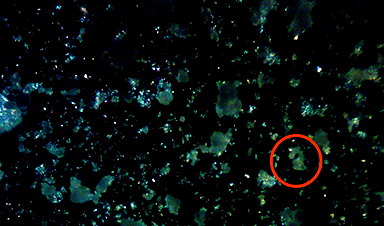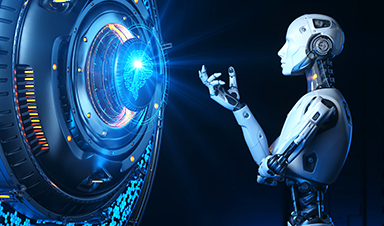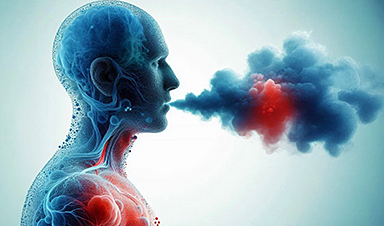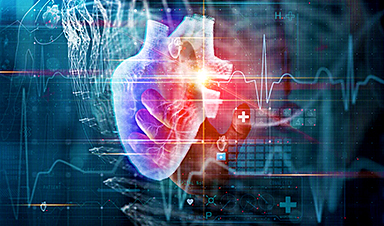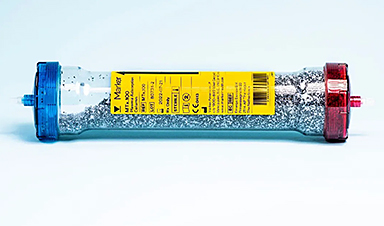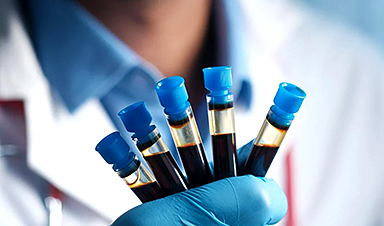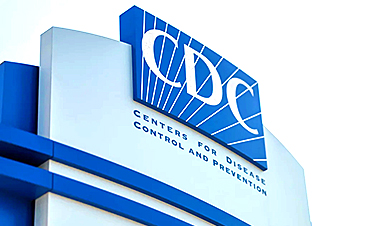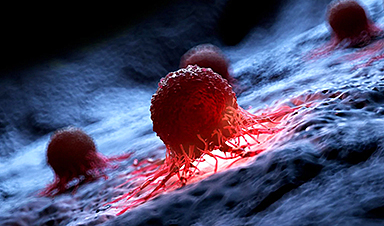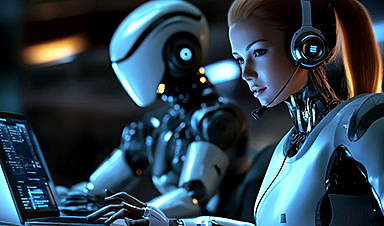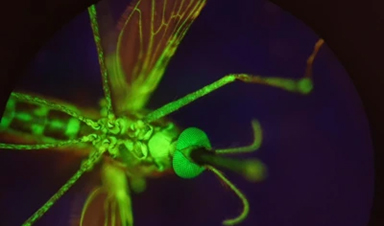The same unique structure that makes plastic so versatile also makes it susceptible to breaking down into harmful micro- and nanoscale particles.
The world is saturated with trillions of microscopic and nanoscopic plastic particles, some smaller than a virus, making them small enough to interfere with cellular function and even alter DNA. Researchers have found these particles in nearly every environment they’ve studied, from Antarctic snow to human blood.
In a new study, scientists have mapped out the molecular mechanisms behind the widespread formation of these tiny plastic fragments. Since plastic first entered the market 75 years ago, its use has become nearly universal—and so has the presence of nanoplastics.
The same properties that make plastic durable and flexible also make it susceptible to breaking down into nanoscale pieces. This breakdown is especially common in the 75-80% of plastics classified as semicrystalline polymers. The research was led by Sanat Kumar, Michael Bykhovsky, and Charo Gonzalez-Bykhovsky, professors of Chemical Engineering at Columbia Engineering.
If you look at a piece of plastic through a powerful microscope, you’ll see alternating layers of hard material and soft material. In the hard layers, plastic molecules are rigidly organized in strong crystal structures. In the soft layers, the molecules lack structure and form a soft, amorphous mass.
When thousands of these layers are stacked together, they create a material that’s lightweight, durable, and extremely versatile. Importantly these materials derive their unique properties through the connectivity between the soft and hard phases.
In a paper published March 28 in Nature Communications, the researchers explain how nanoplastics form. They discovered that the process begins in the soft layers, which grow weaker over time due to environmental degradation and can break off even when the plastic is not under stress. By themselves, these soft pieces break down quickly in the environment. Problems arise when the failure of a soft layer allows hard layers to break off. These crystalline fragments are the nano- and microplastics that can persist in the environment for centuries and cause significant damage in living things, including humans.
We sat down with Kumar to learn more about this work.
How does this paper contribute to our understanding of nanoplastics?
There is a lot of anecdotal evidence of nanoplastics — people have found them all over the place and seen them form — but no one had determined the mechanisms behind how they form.
What did you discover?
75% of all plastic used has sort of a brick-and-mortar structure. It’s made of really thin alternating layers: hard, soft, hard, soft, and so on. We’ve known since the 1950s that the soft stuff is holding the hard stuff together.
What we show in the new study is how easily those soft connectors break even under quiescent conditions such as in a landfill. Once that layer fails, the hard segments have nowhere to go — they scatter into the environment.
Why is that a problem?
These pieces float around, and some end up in human bodies. The smallest pieces pass through cells and into the nucleus, where they can start messing with DNA. Nano- and microplastics, which seem to have similar sizes and shapes to asbestos, raise the potential that they could cause cancer, heart disease/stroke, and other diseases.
Is there an engineering solution to address this problem?
Our results suggest that engineering the architecture of the soft layers to be more resilient would decrease the amount of crystalline fragments that break off.
Clearly, focus needs to be placed on this point to reduce the amount of micro and nano plastics created by normal polymer degradation.
How can better understanding nanoplastics improve human health?
Only 2% of plastics are recycled, mostly because it’s too expensive. But if you just throw plastic into the environment, it creates micro- and nanoplastics that look like they are going to cause health problems.
If you think about it that way, if you have to choose between the health problems that could be created by the nanoplastics vs. the cost of recycling, then maybe it’s actually cheaper to recycle.
Reference: “Mechanism of quiescent nanoplastic formation from semicrystalline polymers” by Nicholas F. Mendez, Vivek Sharma, Michele Valsecchi, Vighnesh Pai, Johnny K. Lee, Linda S. Schadler, Alejandro J. Müller, Shelby Watson-Sanders, Mark Dadmun, Guruswamy Kumaraswamy and Sanat K. Kumar, 28 March 2025, Nature Communications.
DOI: 10.1038/s41467-025-58233-3
The study was funded by the U.S. National Science Foundation and the Basque Government.
News
Psychologists explore ethical issues associated with human-AI relationships
It's becoming increasingly commonplace for people to develop intimate, long-term relationships with artificial intelligence (AI) technologies. At their extreme, people have "married" their AI companions in non-legally binding ceremonies, and at least two people [...]
When You Lose Weight, Where Does It Actually Go?
Most health professionals lack a clear understanding of how body fat is lost, often subscribing to misconceptions like fat converting to energy or muscle. The truth is, fat is actually broken down into carbon [...]
How Everyday Plastics Quietly Turn Into DNA-Damaging Nanoparticles
The same unique structure that makes plastic so versatile also makes it susceptible to breaking down into harmful micro- and nanoscale particles. The world is saturated with trillions of microscopic and nanoscopic plastic particles, some smaller [...]
AI Outperforms Physicians in Real-World Urgent Care Decisions, Study Finds
The study, conducted at the virtual urgent care clinic Cedars-Sinai Connect in LA, compared recommendations given in about 500 visits of adult patients with relatively common symptoms – respiratory, urinary, eye, vaginal and dental. [...]
Challenging the Big Bang: A Multi-Singularity Origin for the Universe
In a study published in the journal Classical and Quantum Gravity, Dr. Richard Lieu, a physics professor at The University of Alabama in Huntsville (UAH), which is a part of The University of Alabama System, suggests that [...]
New drug restores vision by regenerating retinal nerves
Vision is one of the most crucial human senses, yet over 300 million people worldwide are at risk of vision loss due to various retinal diseases. While recent advancements in retinal disease treatments have [...]
Shingles vaccine cuts dementia risk by 20%, new study shows
A shingles shot may do more than prevent rash — it could help shield the aging brain from dementia, according to a landmark study using real-world data from the UK. A routine vaccine could [...]
AI Predicts Sudden Cardiac Arrest Days Before It Strikes
AI can now predict deadly heart arrhythmias up to two weeks in advance, potentially transforming cardiac care. Artificial intelligence could play a key role in preventing many cases of sudden cardiac death, according to [...]
NanoApps Medical is a Top 20 Feedspot Nanotech Blog
There is an ocean of Nanotechnology news published every day. Feedspot saves us a lot of time and we recommend it. We have been using it since 2018. Feedspot is a freemium online RSS [...]
This Startup Says It Can Clean Your Blood of Microplastics
This is a non-exhaustive list of places microplastics have been found: Mount Everest, the Mariana Trench, Antarctic snow, clouds, plankton, turtles, whales, cattle, birds, tap water, beer, salt, human placentas, semen, breast milk, feces, testicles, [...]
New Blood Test Detects Alzheimer’s and Tracks Its Progression With 92% Accuracy
The new test could help identify which patients are most likely to benefit from new Alzheimer’s drugs. A newly developed blood test for Alzheimer’s disease not only helps confirm the presence of the condition but also [...]
The CDC buried a measles forecast that stressed the need for vaccinations
This story was originally published on ProPublica, a nonprofit newsroom that investigates abuses of power. Sign up to receive our biggest stories as soon as they’re published. ProPublica — Leaders at the Centers for Disease Control and Prevention [...]
Light-Driven Plasmonic Microrobots for Nanoparticle Manipulation
A recent study published in Nature Communications presents a new microrobotic platform designed to improve the precision and versatility of nanoparticle manipulation using light. Led by Jin Qin and colleagues, the research addresses limitations in traditional [...]
Cancer’s “Master Switch” Blocked for Good in Landmark Study
Researchers discovered peptides that permanently block a key cancer protein once thought untreatable, using a new screening method to test their effectiveness inside cells. For the first time, scientists have identified promising drug candidates [...]
AI self-cloning claims: A new frontier or a looming threat?
Chinese scientists claim that some AI models can replicate themselves and protect against shutdown. Has artificial intelligence crossed the so-called red line? Chinese researchers have published two reports on arXiv claiming that some artificial [...]
New Drug Turns Human Blood Into Mosquito-Killing Weapon
Nitisinone, a drug for rare diseases, kills mosquitoes when present in human blood and may become a new tool to fight malaria, offering longer-lasting, environmentally safer effects than ivermectin. Controlling mosquito populations is a [...]
